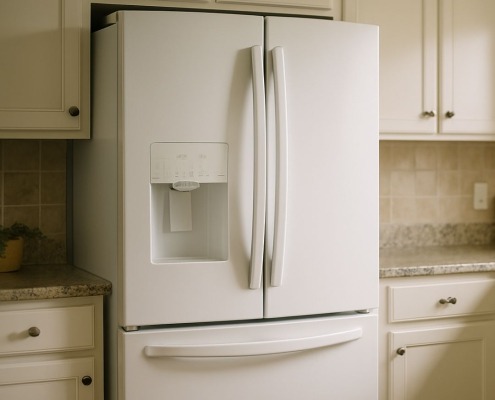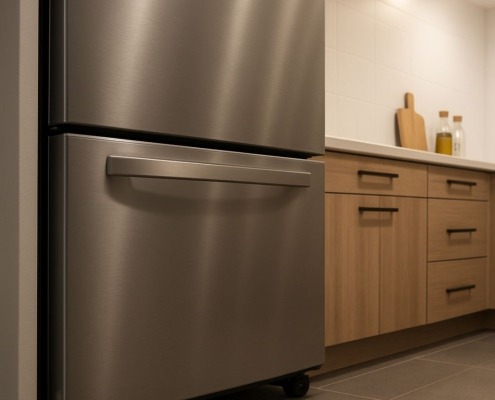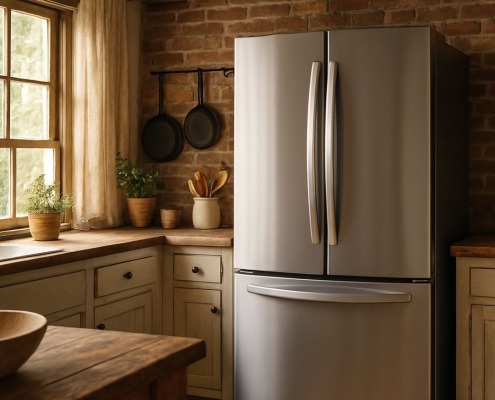How to replace water filter housing WPW10121138 on a Whirlpool refrigerator
Steven E / Thursday May 1, 2025
Is your Whirlpool refrigerator’s water filter housing causing leaks or giving you a hard time when replacing the filter? This common issue can be easily fixed right at home without calling in a pricey technician. Check out the detailed guide and accompanying how-to video below to learn how you can replace your fridge’s water filter housing and restore its perfect functioning.
Looking for the right part? Enter your appliance model number below to find the exact match and get your appliance running like new again!
The water filter housing on a Whirlpool refrigerator is responsible for supporting and connecting the water filter in your refrigerator. Over time, the water filter housing may develop cracks or damage, leading to water leaks or difficulties in connecting the water filter properly. Replacing the water filter housing can resolve these issues.
By following this guide and performing the replacement yourself, you can save both time and money by avoiding the need for professional assistance. Let’s get started and restore the proper functioning of your Whirlpool refrigerator’s water filter system.
Watch here: https://www.youtube.com/watch?v=JvMsxF20IT4
The information in this article may not apply to your specific appliance model. We recommend consulting your manufacturer’s documentation or contact us with any questions.
What you’ll need
- 1/4” nut driver
- 5/16” nut driver
- 3/8” wrench
- 1/4” socket with ratchet
- Flat blade screwdriver
- Towel
Safety precautions
- Always power off and unplug your appliance or switch off the circuit breaker before attempting any maintenance or replacement work. This keeps you safe by preventing any risk of injury from electric shock.
- Don’t test wiring with a multimeter for live voltage if you’re unfamiliar with how to prevent short circuiting when testing.
- When working with wires, avoid touching any exposed wires or terminals. If you need to touch a wire, use a non-conductive tool or wear insulating gloves to prevent electrical shock.
- Take your time and don’t rush while working to prevent accidents and personal injuries.
- Work in a well-lit area so you can clearly see and access the interior parts.
- Clear your workspace of clutter and other obstacles. Keep children and pets away from the work area.
- Never work on internal parts with bare wet hands. Make sure the work area is completely dry.
- Check your user manual to see if there are specific installation or safety instructions for your part or appliance.
- Be gentle when handling or removing parts. Excessive force might damage the appliance or cause injury.
- Wear insulated work gloves to protect your hands from sharp metal parts, pinching hazards and debris.
- Wear safety glasses when working with chemicals, dust or cleaning large debris to prevent injury.
Replacement steps
Removal
- Start at the back of the refrigerator. Remove the rear access panel by unscrewing the seven screws that hold it in place.
- Once the access panel is off, you will see the water valve assembly. Remove the two screws holding the water valve and the screw that holds the water supply line.
- Carefully pull out the valve assembly. Place a small towel on the floor under it to catch any water that may leak.
- Use a 3/8 wrench to push on the locking collars and disconnect the water lines connected to the water filter housing.
- Move to the front of the refrigerator. Open both doors and pull off the foot rail at the bottom.
- Place a small towel on the floor to catch any water. Push the button to release the water filter and remove it from the housing.
- Use a 5/16 inch nut driver to remove the two screws that hold the water filter housing in place.
- Use a quarter-inch socket to remove the screw on the left side of the housing.
- Turn the support arm and disengage it from the housing.
- Pull out the water filter housing to free it from the refrigerator.
- To disconnect the two water lines, use a 3/8 wrench to push on the locking collars and release both tubes.
- Remove the old water filter housing.
- Use a small flat-blade screwdriver to pry off the button cap from the old housing.
- Install the cap onto the new water filter housing.
Installation
- Install the new water filter housing in the same position, ensuring that both water lines are pushed in securely. The smaller line goes in the bottom and the larger one goes in the top.
- Hook the support arm through the designated hole and secure it with the screw on the left side.
- Use two 5/16 inch screws to secure the water filter housing in place.
- Install the water filter by aligning the two connectors on the filter with the corresponding slots on the housing assembly.
- Push the filter in until it clicks into place.
- Install the toe grill by pushing the side clips in until they lock.
- Close the refrigerator doors and go back to the back of the refrigerator.
- Reattach the water lines to the water valve by pushing them in firmly.
- Use a nut driver to attach the water valve securely and use another screw to secure the water supply line.
- Install the rear access panel using a quarter-inch nut driver to tighten the seven screws.
- Turn the water supply back on. Plug the refrigerator back in and check for any leaks.
Congratulations! You have successfully replaced the water filter housing in your refrigerator.
Additional information
Thanks for reading! We hope this guide helped you replace the water filter housing on your Whirlpool refrigerator.
If you still need some replacement parts, grab your model number and head over to AppliancePartsPros.com. We offer over two million parts and most orders arrive in two business days. If you need some help with finding the right part or placing an order, you can contact our team at 1 (877) 477-7278.
While you’re waiting for your new part to arrive, you can explore our DIY blog and watch thousands of video tutorials on our YouTube channel.
Be sure to follow us on Facebook, Twitter and Instagram to see our latest repair guides!
With nearly a decade of experience in providing top-notch customer service regarding appliance parts and repair, Steven enjoys sharing practical advice, troubleshooting tips, and interesting information to help readers stay informed.





